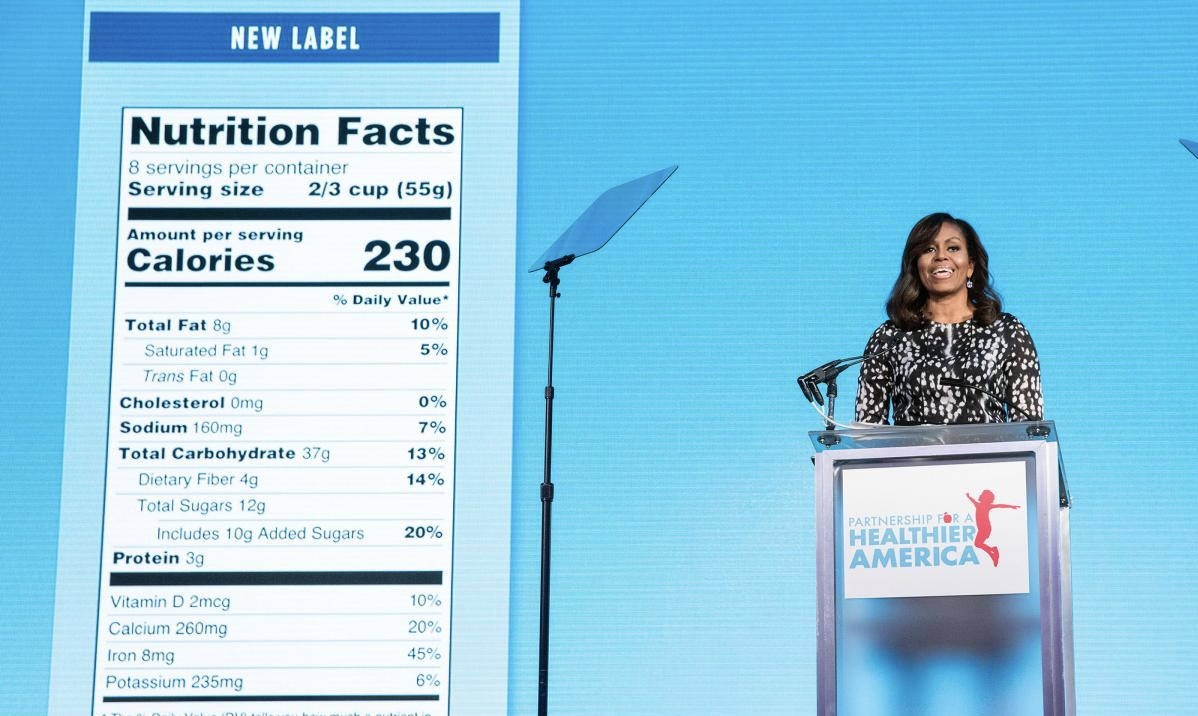Hello! Thanks for being here. Food Fix has been up and running for two weeks, and I continue to be so encouraged by all of your excitement about this new venture. Please keep writing to tell me what you want to see covered here.
As a reminder, Food Fix will remain free Tuesdays and Fridays for the next two weeks in August. Come September, Food Fix will transition to being part-paid, part-free. Tuesday newsletters, which will focus more on action inside the beltway, will be for paid subscribers only. Friday newsletters, which will be a tad more general interest, will remain free to everyone. Paid subscribers will always get both.
If you become a paid subscriber in August, you’ll get an extra month added to your annual subscription. It’s a great way to support independent journalism. You can find subscription options here.
If you have questions about why I decided to do paid subscriptions, or why I launched Food Fix, start here. In the meantime, you can always reply to this email or shoot me a note at helena@foodfix.co with feedback.
Alright, let’s get to it –
Helena
***
Today, in Food Fix:
– What’s going on with the White House conference on food?
– Republicans have some stern questions for the Domestic Policy Council
– How this exercise has ripped open the hunger vs. nutrition divide
– Are nutrition-related SNAP restrictions off the table?
***
A guide to the White House food conference
The last time we had a White House conference on food, Richard Nixon was president and Neil Armstrong and Buzz Aldrin had just walked on the moon. Now that we’re about to have another one next month… well, everyone has a lot of questions – and doubts – about whether this one will have the same historical significance as the 1969 summit.
That’s a high bar to meet: The last conference is credited with completely reshaping American food policy and federal nutrition assistance, including major expansions of the Supplemental Nutrition Assistance Program and the National School Lunch Program. Something like 1,600 recommendations were completed in two years.
President Joe Biden’s White House conference on hunger, nutrition and health, announced in May, has so far sparked an impressive amount of grassroots engagement. A very long list of groups, from all over the country, has been holding convenings and listening sessions, collecting feedback and submitting comments to the White House. There’s a ton of energy. Frankly, there’s more broad-based interest for this event than just about anything I’ve ever covered in the food policy space.
The question everyone is asking: What is actually going to come of this? Is the White House going to be ambitious in its efforts to overhaul the nation’s food landscape? Is this going to be a “BFD,” to borrow Biden’s signature term, or much to-do about nothing?
The Biden administration, for its part, says the conference remains a key piece of its agenda despite the big pileup of items on the president’s plate.
“This is one of the administration’s biggest priorities,” an administration official told Food Fix. “The president himself announced the conference and really sees this as an incredible opportunity to make transformative change in terms of our food and nutrition policies. We really want this to be a whole-of-government approach.”
National strategy incoming: A working group spanning more than 20 federal agencies is currently developing a national strategy that’s expected to be unveiled alongside the conference. The effort is really broad: It includes the traditional agencies like the Department of Health and Human Services, FDA and USDA, along with the likes of the Federal Trade Commission and the Departments of Transportation and Veterans Affairs.
Notably, this work has been mostly virtual over the past several months, the administration official said – leaving just about everyone in food world trying to figure out who exactly is involved in this process. Most importantly, who is making decisions? (If you have a staff list, ping me here: helena@foodfix.co.)
Latest on conference logistics: The White House is planning for a hybrid in-person and virtual event, the administration official confirmed. Officials have encouraged organizations to plan watch parties to ensure that a large number of people can participate (though there will not be federal funding to help hold these meetings). Still, there is already tons of jockeying among various interest groups and companies trying to ensure they can participate in person, or get their executives to appear at the in-person portion of the event.
TBD: There are a ton of outstanding questions – including some basic ones, such as, when is it going to be? We still do not have a date. The White House is eyeing late September, so, taking holidays into account, it looks like Sept. 28 or 29 are most likely. Aides have told stakeholders that they haven’t secured a location yet. An administration official confirmed these details are still fluid.
Folks on the outside are assuming part of the holdup is due to the difficulty of carving out time on the president’s calendar. But in the absence of a firm date, interested parties will continue to grow more skeptical that the conference will ultimately amount to little more than a scaled-down press event where a government strategy is unveiled.
Republican fire: Like many in Washington, Republicans aren’t convinced about how seriously the event is being taken. House Agriculture ranking member GT Thompson sent a pointed letter on Wednesday to Susan Rice, head of the White House Domestic Policy Council, which said there were “more questions than answers” about the process and noted that many consumer, government and industry interests are “wondering if substantive plans exist or if this is simply a political storytelling stunt.”
(For what it’s worth, I’ve been told Rice has been engaged on conference planning. But it’s not lost on anyone that the White House initially did not want to hold a conference and only came around after Congress, namely House Rules Chair Jim McGovern, secured appropriations language that directed the White House to host the event and provided $2.5 million to do so.)
Thompson questioned why USDA wasn’t taking more of a leading role in the conference. He asked for an accounting of how many comments the White House has received and whether there would be an opportunity to comment on the national strategy when it’s released. He also requested a breakdown of who was serving on the interagency working group, among other things.
Right idea, wrong time? There are supporters of this conference, and of transformational change within the U.S. food system, who privately acknowledge that the timing of this event is awkward at best. It comes right before the midterm elections, and food inflation is a huge issue both substantively and politically right now.
It’s also right before a farm bill cycle in which everyone expects SNAP (aka food stamp) benefits to be a big fight, especially if the House flips to GOP control. Meanwhile, the conference comes just as universal free school meals are ending… and ahead of a looming cliff of increased SNAP benefits, which are due to end whenever the Covid-19 public health emergency stops being extended.
Nutrition vs. hunger: This entire exercise has also ripped open a long-running tension between the anti-hunger and nutrition communities. Anti-hunger interests worry the conference will favor nutrition over hunger concerns, in both tone and substance. They’re concerned the discussion could be patronizing or potentially promote policies to limit choices for low-income folks utilizing nutrition assistance during a time of high inflation.
On the flip side, nutrition advocates fear the conference won’t do enough to build momentum against the worsening epidemic of diet-related disease, in which ailments like diabetes are disproportionately harming communities of color. They fear that the conversation will default to advocating for expanded benefits without putting more emphasis on improving nutrition or health outcomes.
SNAP choice off the table? This tension has been building behind the scenes for months. There has been a ton of nervousness among anti-hunger groups and major food and beverage companies that the big taskforce working to inform the conference would throw its weight behind the concept of restricting the purchase of certain unhealthy foods with SNAP benefits (sugar-sweetened beverages would be the natural target).
But several sources told me this week that such a recommendation will not be in the report when it is unveiled next week. The taskforce was unable to reach consensus on the idea, I’m told. Certainly there will be a number of major nutrition recommendations in that report, but SNAP restrictions won’t be on the list. (The effort is operationally led by Tufts University, the Chicago Council on Global Affairs, Food Systems for the Future and World Central Kitchen.)
Of course, it should be noted that the taskforce, while a major outside effort, is not in any way endorsed by the White House. “We don’t have any formal partnerships with any organizations,” the administration official said.
Comments: I’m still collecting White House conference comments. Send me yours if you have not already! I’ll compile everything that’s been sent to me next week so you can read them.
***
What I’m reading
Homemade baby food contains as many toxic metals as store-bought options (CNN). This story, based on a new Healthy Babies, Bright Futures study, is not surprising to those in the weeds on this issue, but it’s going to be alarming for many parents. Reducing toxic-elements is a food system issue that spans way beyond baby food makers.
Inflation Takes a Bite Out of the Fast-Food Value Menu (Wall Street Journal Video). WSJ reporter Heather Haddon breaks down how inflation and supply chain problems are affecting value menu items across popular restaurant chains.
Biden rule would give organic chickens access to the outdoors (Reuters). The Biden administration has put forward an update to organic livestock standards, a policy that’s been in the works for decades but came to a grinding halt during the Trump administration, reports Leah Douglas. It’s a win for the organic interests that have been pushing hard for these changes (and for consumers who probably think such standards already exist). But the rule has a 15-year phase-in. That’s a very long time, even by Washington standards.
***
Who’s who
The Wall Street Journal now has Kristina Peterson on the food and agriculture policy beat. She was previously covering Congress.
***
Spread the word – and subscribe!
Please do me a favor and forward this newsletter to someone you think would find it useful or interesting. You can subscribe to the newsletter for free here.
As a reminder, I recently wrote about why I launched Food Fix and answered the most common questions I’ve received. To learn more, a breakdown of free and paid subscription options is here.
See you on Tuesday!

